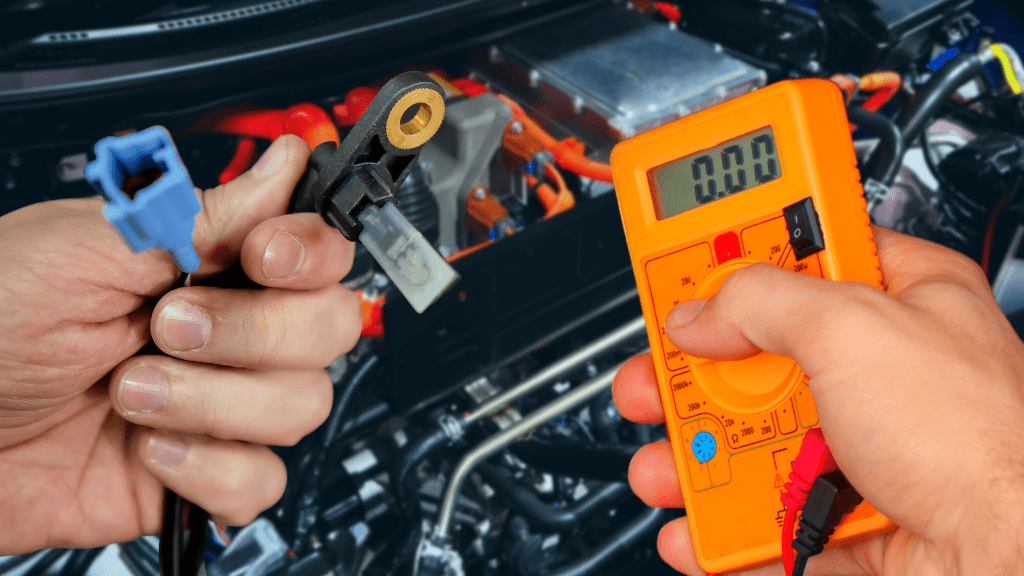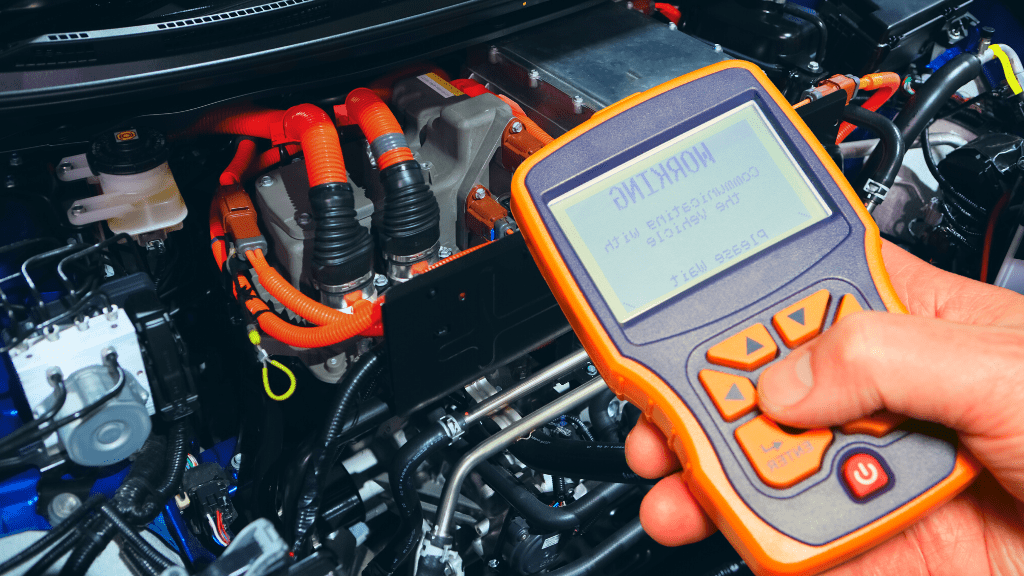How To Test A ABS Sensor With A Multimeter
Anti-lock Braking System (ABS) sensors are components within modern vehicles that work with the ECU to control the intensity of the brake when you try to stop your car.
They are sensors attached to wheels through a harness that monitor the rotational speed of the wheels and also use this data to determine if the wheels are locking up.
A brake applied through the ABS also works faster than a manual brake. This means they are useful in more stringent conditions like when you drive on wet or icy roads.
A problem with the sensor spells an apparent danger to your life, and the ABS light or traction control system light coming on requires very urgent attention.
How do you diagnose the sensor for issues?
Our guide takes you through all you need to know about how to test ABS sensor.
Let’s get right in.

Tools Required To Test ABS Sensor
For all the tests mentioned here, you would need
- Multimeter
- Set of Wrenches
- Car Jack
- OBD Scan Tool
The multimeter helps us make multiple forms of diagnoses on the sensor and is, therefore, the most important tool.
How To Test a ABS Sensor With a Multimeter
Lift the vehicle with a car jack, disconnect the ABS from its sensor cable, set the multimeter to the 20k Ohms range, and place the probes on the sensor terminals. You expect to get the appropriate reading between 800 and 2000 Ohms if the ABS is in good condition.
We will dive deeper into this testing process and also show you how to diagnose a fault by testing the sensor’s AC voltage reading.
- Lift The Vehicle With A Jack
For safety measures, you put the car transmission in park mode and also activate the emergency brake so that it doesn’t move while you are under it.
Now, to have access to the sensor to conveniently run a diagnosis on it, you also have to lift the car where the sensor is located.
Depending on your vehicle, the sensor is typically located at the back of one of your wheel hubs, but you may refer to your car manual to know its exact location.
You also want to know how the specific ABS sensor on your vehicle looks to avoid mixing the sensor up with other sensors.
Slide in a mat under your vehicle to keep your clothes clean while you run these tests.
- Set The Multimeter To The 20k Ohms Range
Put the meter in the Ohms setting represented by the omega symbol (Ω).
You will see a group of numbers at the Ohms section of the meter which represents the measurement range (200, 2k, 20k, 200k, 2m, and 200m).
The expected resistance of an ABS sensor requires you to put the meter in the 20k ohms range to get the most appropriate reading.
- Disconnect The ABS Cable
Now, you disconnect the anti-lock braking system from its sensor cable to expose the terminals for the test.
Here, you simply and gently pull apart the wire harnesses where they are connected and move your focus to the harness on the wheel side.

- Place Probes On ABS Terminals
Since polarity doesn’t matter while measuring Ohms, you place your meter probes on any of the sensor terminals.
- Evaluate Results
Now, you check the meter for a reading. ABS sensors are expected to have between 800 Ohms and 2000 Ohms.
Looking at your car’s sensor model, you determine the right specifications to evaluate whether you are getting the right value or not.
Since the meter is put in the 20k Ohms range, it shows a constant value between 0.8 and 2.0 if the sensor is in good condition.
A value outside this range, or a fluctuating value, means the sensor is faulty and needs to be replaced.
If you also get an “O.L” or “1” reading, this means the sensor has a short, break, or an excessive amount of resistance in its wire harness and you need to replace it.
Testing ABS AC Voltage
Testing the voltage from an ABS sensor helps us find out whether the sensor works correctly when in actual use.
With the car put in park mode, emergency brake activated, and the vehicle lifted, follow these steps.
- Set Multimeter To 200 AC Voltage Range
AC volt is represented by “V~” or “VAC” on the multimeter and usually has two ranges; 200V~ and 600V~.
Put the multimeter in the 200V~ setting so you get the most appropriate results from your test.
- Place Probes On ABS Terminals
Just like in the resistance test, you place the meter leads on the terminals of the ABS.
Thankfully, the ABS terminals don’t have polarity, so you simply place the leads on any of the terminals without worrying about inaccurate readings.
- Spin Wheel Hub
Now, to mimic the vehicle moving, you spin the wheel hub to which the ABS is connected. This generates voltage and the amount of volt generated depends on the speed of the spinning wheel.
You want to make sure you turn the wheel at a constant rate to get a constant value from the meter.
For our test, you make a revolution every two seconds. This way, you aren’t worked up from spinning the wheel.
- Check Multimeter
The multimeter is expected to display a voltage value at this point. For our revolution speed, the appropriate AC volt reading is about 0.25V (250 millivolts).
If you don’t get a reading from the meter, try to push in the sensor wire harness where it goes into the wheel hub. If you still don’t get a reading when you check the multimeter, then the ABS has gone bad and needs to be replaced.
A lack of voltage or an inappropriate volt value may also be caused by a problem with the wheel hub itself. To diagnose this, replace the ABS with a new sensor and run this exact voltage test again.
If you still don’t get an appropriate volt reading, then the problem is with the wheel hub and you need to replace it.
Diagnosing Using An OBD Scanner
The OBD scanner offers you an easier solution to identifying problems with your ABS sensor, although these aren’t as accurate as the multimeter tests.

You insert the scanner into the reader slot beneath the dashboard and look out for error codes associated with the ABS.
All error codes starting with a “C” point to a problem with the sensor. For instance, the error code C0060 shows a problem with the left front ABS, while C0070 shows a problem with the right front ABS.
Refer to this full list of ABS error codes and their meanings to know what to expect.
Conclusion
The ABS sensor is a fairly easy component to test and also offers different ways we may diagnose our vehicles for issues.
However, with any test you wish to run, make sure you apply the right safety measures and set the multimeter to the appropriate range to get the right results.
As mentioned in our article, remember that the functionality of your ABS significantly determines your safety on the road, so any faulty component should be replaced immediately before the vehicle is used.
Frequently Asked Questions
How Many Ohms Should a ABS Sensor Have?
A good ABS sensor is expected to hold between 800 Ohms and 200 Ohms depending on the vehicle or model of the sensor. A value outside this represents a short circuit or inadequate resistance.
How Do I Know If My ABS Sensor Is Broken?
A bad ABS sensor shows signs like the ABS or traction control light coming on at the dashboard, the car taking longer to stop, or dangerous instability while braking in wet or icy conditions.

Author
Alex Klein is an electrical engineer with more than 15 years of expertise. He is the host of the Electro University YouTube channel, which has thousands of subscribers.
